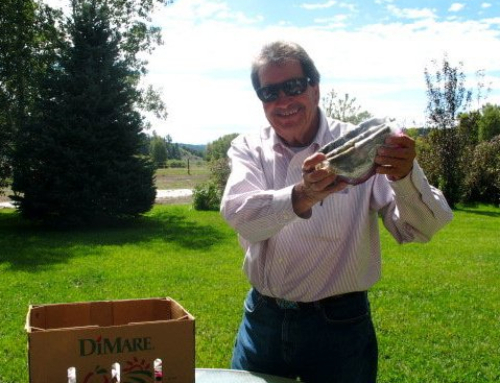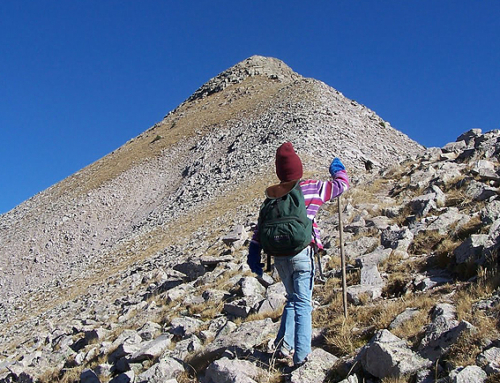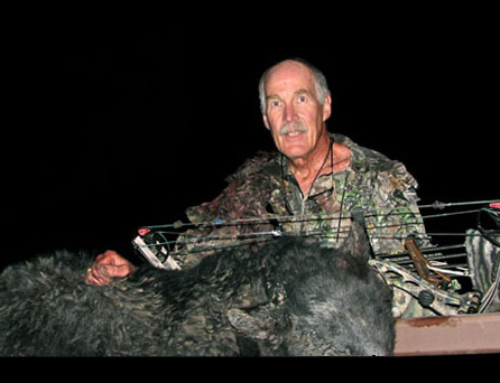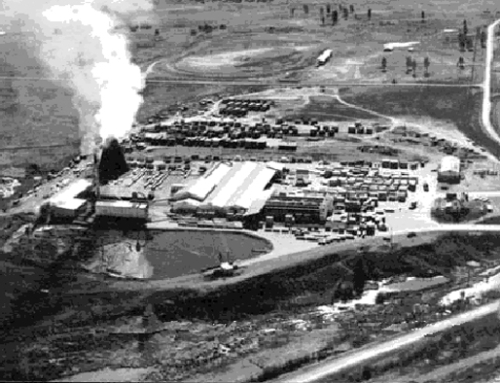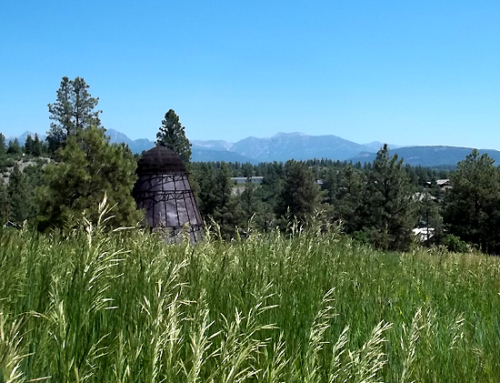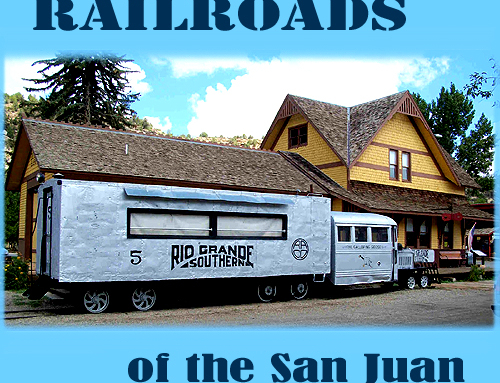San Juan History Outlined

by Norm Vance
Prehistoric Native Americans
No one knows the people who first ventured into Pagosa Country. Over a period of many thousands of years, early or “Paleo” Indians roamed south from what is now Alaska and Canada after their ancestors crossed the Bering Strait during the last ice age. Leaving little evidence of their existence, these people ultimately populated the Americas. It is likely that wildlife in Pagosa Country drew early Indians into the mountains during summer months.
These early Paleo Indians developed into the Indian culture we now call the Anasazi. The Anasazi occupied the Southwestern United States for a couple thousand years. Beginning as nomadic hunters and gatherers, they learned farming from tribes further south in Mexico and became stationary due to requirements of farming. Pagosa was the home of many generations of Anasazi. They lived along the river ways south of the San Juan Mountain range. They lived in both pit houses and cliff dwellings. Rich fertile soil along the riverbanks allowed for excellent farming. They now sent out hunting parties to follow various game animals seasonally. The Pagosa area provided good hunting.
Around one thousand years ago, a band of Taos Indian priests moved into the Chimney Rock area. Chimney Rock held a high spiritual significance for the priests who built pueblo-type stone structures high atop the monolithic rock. The priests mixed with the native population and survived until the mass Anasazi exodus of the area in about 1200 AD.
As you drive the foothills from Chama west to Dulce and over to Ignacio and the Navajo Lake area, use your imagination to visualize the Anasazi. During daylight hours, Anasazi would be seen tending crops along the riverbanks. Their homes would be barely visible, being made from and/or built into the earth. At night, open fires sparkled across the landscape, randomly scattered over hillsides and along the riverbanks. The Anasazi are the largest single population to ever live in Pagosa Country, including now!
For reasons still unknown, but generally thought to be drought inspired, the Anasazi of the entire four corners area moved about 1200 AD. They mixed with and became the later Pueblo Indian culture in New Mexico, Arizona and Utah. Except for perhaps a few who remained, Pagosa Country was again barren of human population for several hundred years.
The Ute Indians lived in a vast area of the west, summering in Colorado and wintering in Northern New Mexico. The Capote Utes moved into and lived in Pagosa Country, camping along the San Juan River and hunting in the mountains. In winter, they moved to the Abiquiu area in the Chama Valley, located south of the present town of Chama, New Mexico.
The Utes as well as the Anasazi before them came to the Great Pagosa Hot Spring. The name “Pagosa” is a Ute term for hot healing waters. In the Indian era, there were trails worn from centuries of use that led to and intersected with the spring. The Indians believed that the spring was a gift from the great spirit and it was the center of activity during their summers in the San Juans.
A anthropologist visiting the spring said he had followed ancient Indian “signs” in the form of rock art to the spring. It has been a well known attraction for thousands of years.
The history of the Ute was interrupted, and forever altered, by the arrival of Europeans. The lust for gold and property ownership caused the white man to uproot the native Utes, using superior force. After years of problems with the alien settlers and their military, the Capote Utes, Moache Utes and Weminuche Utes moved to a reservation located in the southwest portion of Pagosa Country. Today, Ignacio, Colorado is the tribal center for the descendants of these tribes. The Southern Utes, as the tribe is now called, are very active. A visit to the tribal center is an interesting stop for tourists.
The Jicarilla (pronounced hic-ah-REE-ah) Apache tripe was not native to Pagosa Country. Native to the Great Plains, the Apaches were driven to the eastern San Juan Mountains and northern New Mexico by the Comanches. Later the Apache tribe was dispossessed from this land by US military action. They became, for several reasons, a people without a homeland. After many unsuccessful attempts to move them onto reservations with other tribes, a Jicarilla Apache reservation was formed in 1887. Today the tribal headquarters is in Dulce, New Mexico.
Life was hard on this reservation, but the Jicarilla developed into a modern tribe by developing cattle, lumber, gas and oil production along with gambling, tourism and other activities.
Spanish Settlement
When most people are asked about American History in the 1500s and 1600s, they relate the stories of the Pilgrims and the thirteen colonies. There is another history of that time that ultimately involves Pagosa Country. This is the history of the Spanish movement into the west.
The Spanish explorers moved into Mexico, New Mexico and Southern Colorado before settlement of the East Coast of the United States. In 1540, Spanish explorer Coronado visited the Grand Canyon. By 1598 there were Spanish settlements along the Rio Grande River just south of Pagosa Country. The first English permanent settlements on the East Coast began in 1607.
Spanish explorer Juan Maria Rivera entered the San Juan Mountains in 1765. Eleven years later, Fathers Dominguez and Escalante made a journey from Santa Fe, searching for a passage through the mountains to the west. They traveled through southern Pagosa Country, passing present day towns of Arboles, Allison and Tiffany.
The route followed by Dominguez and Escalante became the historic Old Spanish Trail that ultimately linked Santa Fe with Los Angeles.
In 1821, the Santa Fe Trail was opened between the United States and Santa Fe. The combination of the Old Spanish Trail and Santa Fe Trail allowed new traffic into the area. The trails were used for decades by trappers, settlers, cowboys and other brave souls.
Mountain Men
Back in the United States and Europe in the early 1800s, the well-dressed gent of the day wore a beaver fur hat and likely had beaver fur on his coat. The popular fashions produced a large market for beaver pelts. Fur trappers were the first Anglos to enter Pagosa Country and the Rocky Mountains.
The trappers, or “mountain men” were a rough and hardy lot. Living off the land was a hard life at best. They ventured up rivers with a few mules, few supplies, and flintlock rifles seeking large populations of beaver. On occasion the mountain men traveled with loads of pelts to trading posts to trade and sell pelts and to visit with other trappers. From Pagosa Country they went south to Abique and Santa Fe for these rendezvous.
In 1846 and 1847, the United States and Mexico were at war. The U.S. defeated Mexico and won from Mexican rule lands that became New Mexico, Arizona, California, Nevada, Utah and Colorado.
The Lure of Gold
Pagosa Country became a United States territory when in 1859, a party led by Captain John Macomb entered the Pagosa area following the Old Spanish Trail. Macomb camped at the Great Pagosa Hot Spring, and was awed by its natural powers and with the gold deposits he had seen in Southwestern Colorado rivers. The country was already deep into gold fever because of the California gold rush and the gold finds in Colorado, west of Denver. The lure of gold in the San Juan began a rush that would forever change the area.
The San Juan Mountains had been a barrier holding back both settlers and exploration. Harsh winters and rugged terrain were more than the Spanish or early Anglos wanted to deal with. A fortune in gold was a different matter, however. Soon after the news spread that there were streams gleaming with gold, the rush was on.
The area northwest of Pagosa Country was the major area for gold and silver strikes. The towns of Silverton, Ouray, Telluride, and others sprang to life overnight. At the same time, Summitville, the largest mine in this area, began to operate. Summitville is south of present day Wolf Creek Pass and is interesting to visit as it is a ghost town and Americas No. 1 environmental disaster.
Pagosa, with its well-traveled trails remained an access route. The Great Pagosa Hot Spring was well-known by travelers and miners. In the summer months in the early 1870s, the spring was a welcome rest and recuperation spot.
Fort Lewis
In 1878 the U.S. Army moved into Pagosa and built a fort on the west bank of the San Juan River across from the Great Pagosa Hot Spring. The mostly black soldiers were here to protect miners and settlers from unhappy Utes. Fort Garland, in the San Luis valley, was the nearest military post. The Army established roadways across the Continental Divide to link the two forts. The road became known as Elwood Pass and is now a popular four-wheel drive trail to Summitville.
Soon, a settlement sprang up around the fort. The roads from the east, south and west became well traveled.
Pagosa Being Born
Imagine life around the Great Pagosa Hot Spring in those days. Travelers from back in the United States along with supply wagons went in and out of the area daily. Around the spring, Indian camps kept the Native American influence strong. Settlers began building family bath houses around the spring. At night, saloons were the hub of activity. Music, shouting and an occasional gunshot could be heard. The town of Pagosa Springs was being born.
In 1881 Fort Lewis moved west to Durango, and Pagosa Springs settled into a quiet community, basing its existence on the springs, sheep, cattle and lumber. In the early 1900s there were many sheep herders in the area. Sheep wandered the mountains in summer and were routed to the southern foothills in winter. Intermixed with sheep were cattle and large ranches developed across the area. Lumber, however, remained the main industry of the area.
The major railroad line bypassed Pagosa Springs to the south, stopping at Pagosa Junction on its way from Chama to Durango. Train tracks were laid into many valleys and into Pagosa Springs. These were used to haul lumber and ultimately connected to the main line. Wood from the area was shipped to many diverse locations, including logs for home construction in Denver, and wood for chopsticks in Japan.
Pagosa Survives
During World War I, a better route from the San Luis Valley to the San Juan Valley resulted in the construction of Wolf Creek Pass. The towns that now exist in Pagosa Country are the towns that survived. Many settlements and towns faded away as time passed. It is to the credit of these residents of the area that Pagosa Country has become what it is today. In a harsh environment, their spirit overcame the rocky road that we call nature and the economy.
Pagosa Country now boasts a multi-faceted economy and lifestyle. Cattle ranches still exist and the modern cowboy is very much part of the area. With the creation of Wolf Creek Ski Area and the development of the area around the springs, tourism and outdoor sports became the main industry.

